A macabre gaiety pervaded Berlin like an intoxicating smog. There was no shortageof drink, drugs, or beautiful women. “There are two kinds of places,” wrote a contemporary of Bertolt Brecht, ” those one talks about, and those one doesn’t talk about but frequents just the same”, including such dives as the Eldorado nightclub, “where the arithmetic of love is not without its mistakes.”
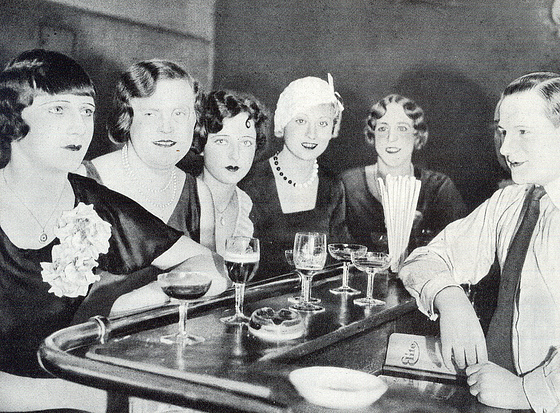
"A very famous photograph from Weimar Germany. The "El Dorado" was situated at 29, Lutherstraße, and mainly attracted members of Berlin's high society, adventurous foreign tourists and provincial artists and writers. It had a lavish floor show. It was closed down in about 1932, if I remember. I never visited this particular club when I lived in Berlin during the 1920s."
“Voluptuous Panic” — a translation of the Latin term “ilinx,” which refers to a mixture of ecstasy and terror.”I thought that word summed up Weimar Berlin’s unusual sexual rush,” says Gordon. “It wasn’t just sex the way, say, the French would have enjoyed it, like a good meal or music. Rather, it was sex that was always mixed with something else, like danger, power or death.”
Inflation is so rampant that the local paper currency is good only for toilet paper. Cocaine, morphine and opium are peddled on every street corner. And more than 120,000 desperate women and girls of every age and stripe sell their bodies for a pittance, including mother-daughter prostitution teams and brazen streetwalkers well into the third trimester of pregnancy.
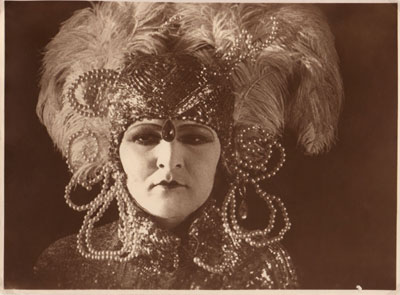
"Gordon says his massive, wallet-busting collection began as part of a job assignment from the Goethe Institute, a program supported by the German government to promote German language and culture. "Back in 1994, I got a grant from them to do a cabaret extravaganza in San Francisco starring Nina Hagen," recalls Gordon. "I decided to do a real, three-ring Weimar production based on the life of Anita Berber, the great sex goddess/flapper of the age. We had a lot to go on, research-wise, except the visuals. I went to the library, and I was amazed to find nothing except old George Grosz and Otto Dix paintings and some rather tame photos which had been reprinted endlessly."
At its height, Berlin had 160 wholly different gay and lesbian bars, and a vibrant homosexual culture, from the famed Berlin drag queens, to a veritable rainbow of lesbian styles. What an exciting time to be alive! Intellectuals from all over Europe fled their prudish homelands to take up residence in the zesty centres of Berlin. English poets, Jewish physicists, and a multitude of writers, artists and psychologists turned Berlin into the place to be.
” Dreadful tastelessness. But on what a level!” So wrote Bertolt Brecht of a raucous capital city where he laughter was about to stop. ” You should steal 500 marks and follow me,” wrote Bertolt Brecht from Berlin to a friend in 1920. What drew Brecht and so many other brilliant minds to this glamorous capital? There was an allure , an electric atmospphere, a cynicism, and an intellectual ferment that characterized Berlin in the 1920’s.

Berlin was a center of the roaring twenties in Germany. After the end of Imperial Germany a period of very liberal lifestyle followed known as die Goldenen Zwanziger (lit. the golden twenties). A little bit out of the line, but images from the 1920s in Berlin. In front of the Brandenburg Gate.
Jazz was all the rage in Berlin in the ‘20’s, just as it was in America. Many African-American entertainers, such as the singer Josephine Baker, felt more comfortable in Europe, where the racial climate for blacks was more relaxed. Baker toured the whole of Europe and caused a sensation in Berlin with her overtly sexual “banana dance.” Cabarets were where most Germans went to hear music. In addition to singers, a cabaret would usually have comedians and dancers, and the acts were considered extremely risque for their time. Classical music also flourished at this time. The Berlin Philharmonic Orchestra was under the leadership of conductor Wilhelm Furtwangler, a man of intense passion and creativity. In addition to the classics, Furtwangler presented works by new composers such as Stravinsky.
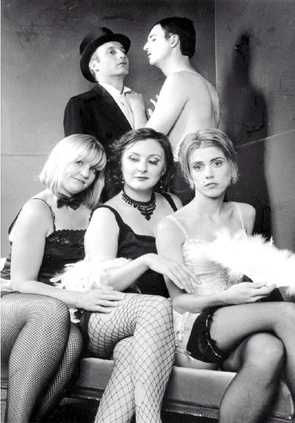
"All the gay abandon, passion, struggle and songs of 1920s Berlin are recreated in this award winning and hugely popular cabaret that began at the Weimar Room on Hindley Street. Hilarious and often touching, the sho
veals the fragility of the times and its people - an era not so different from now.For Brecht, as for all the real and would-be Bohemians of the city, there was one, only one, gathering place: the Romanische Café. There, in that shabbily splendid barn, gathered the writers, the artists, the art dealers, the journalists, poets, dancers, musicians, and divorce lawyers to talk endlessly over coffee and the occasional soft boiled egg served in a glass.They talked about the opening of Brecht’s “Threepenny Opera” or the latest novel by Thomas Mann, or Erich Maria Remarque’s controversial bestseller, “All Quiet on the Western Front”, or the revolutionary theories of the Vinnese Sigmund Freud, or Albert Einstein’s work at the Kaiser-Wilhelm-Gesellschaft, or movies such as the “Blue Angel” , or Duke Ellington’s smash hit, the jazz revue “Chocolate Kiddies”.
“I saw pimps offering anything to anybody, little boys, little girls, robust young men, libidinous women, animals. The story went around that a male goose of which one cut the neck at the ecstatic moment would give you the most delicious, economical, and time-saving frisson of all, as it allowed you to enjoy sodomy, bestiality, homosexuality, necrophilia and sadism at one stroke. Gastronomy too, as one could eat the goose afterwards.” ( Luigi Barzini , “The Europeans”)

"Sin Cities is a fantastic three-part series of Canadian documentaries about some of the sexiest cities in the 1920s and 30s: Paris, Berlin and Shanghai. Last night, the featured city was Berlin, shown as a decadent, hedonistic playground, where nighttime brought the freaky denizens out of the woodwork to play around in a free, expressonist society."
In Art, DaDaism was a controversial and exciting movement. DaDaism grew out of the earlier Cubism movement and it used collage and photomontage techniques. Many DaDa works were overtly political. The majority of DaDaists denounced the Prussian government and were anti-capitalistic and anti-bourgois. Needless to say, the average German was puzzled by DaDaism if not infuriated by it. Prominent DaDaists included artists Hans Richter, George Grosz, and Raoul Hausmann.Writers also flocked to Berlin in this time cultural experimentation. Vladimir Nabokov lived in Berlin at this time, and began writing his first novels in Russian. There is no doubt, however, that the most influential book in Germany in the 1920’s was “All Quiet on the Western Front.” Written by a young veteran of the German Army in World War I, Erich Maria Remarque, it chronicled the horror of the war and the sense of utter defeat felt by many Germans.
Behind all the interbellum giddiness of the Berliners lay the memory of the waste of war, the disillusioning failure of political reform, and the grinding pressure of inflation. Ahead lay the path to fascism and yet another holocaust. That fragile moment in between brought to life a conjunction of time and place that still resonates in our era.
bacillus can survive here.””]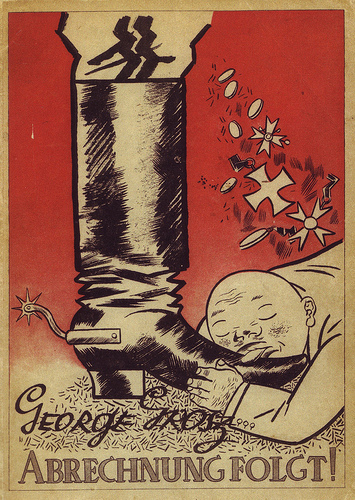
“Five of Nabokov’s early stories (A Guide to Berlin, The Aurelian, Cloud, Castle, Lake, Spring in Fialta and Lance) recently appeared in a classic Reklam edition as Nabokov’s Berlin Erzählungen. Compare their themes with mid-1920s posters in the city’s national gallery and you can see how topical stories featuring variety shows, fun-loving girls and cinema were. But Nabokov gave the Berlin vignette additional spin with the gift of seeing everything symbolically. He was a Russian poet, influenced by the pre-revolutionary Blok. His mournful-magical imagery seems to me comparable with some of his contemporary Mandelstam’s. What tipped him back towards realism was a fascination with vulgarity. His later Berlin was awash with advertisements for consumer goods. Billboards and neon signs decorated the streets. The vices of modern culture fascinated Nabokov and would later almost overwhelm him in the US. His macabre and dramatic preoccupation with films and the cinema, outed in the short novel Laughter in the Dark, began in Berlin and finally ended in America when Hollywood cast Sue Lyon as Lolita.”
Indeed, the sheer variety of odd sexual tastes Gordon documents in “Voluptuous Panic” is astonishing. For instance, Gordon identifies 16 different types of prostitutes, including “telephone girls,” enormously expensive child prostitutes ages 12-17 labeled “Marlene Dietrichs” or “Lillian Harveys” according to their physical attributes. These girls could be ordered by phone and delivered by taxi to the client. There were also so-called minettes, who acted out S/M fantasies, and “demi-castors” (French slang for “half-beavers”), young women from good families who made extra cash by hooking part time.
In tribute to the German mania for taxonomy, Weimar Berlin boasted an equally diverse assortment of lesbian and gay labels. “Sugar-lickers” were nighttime gay pederasts, and “Breslauers” were men with large penises. Lesbians might be ultrafemme “madis,” or tuxedoed, highfalutin “dodos,” and so on. And there seemed to have been countless nudists societies — some for libertines, some for health nuts and still others with ties to political parties like the Nazis or the Communists.
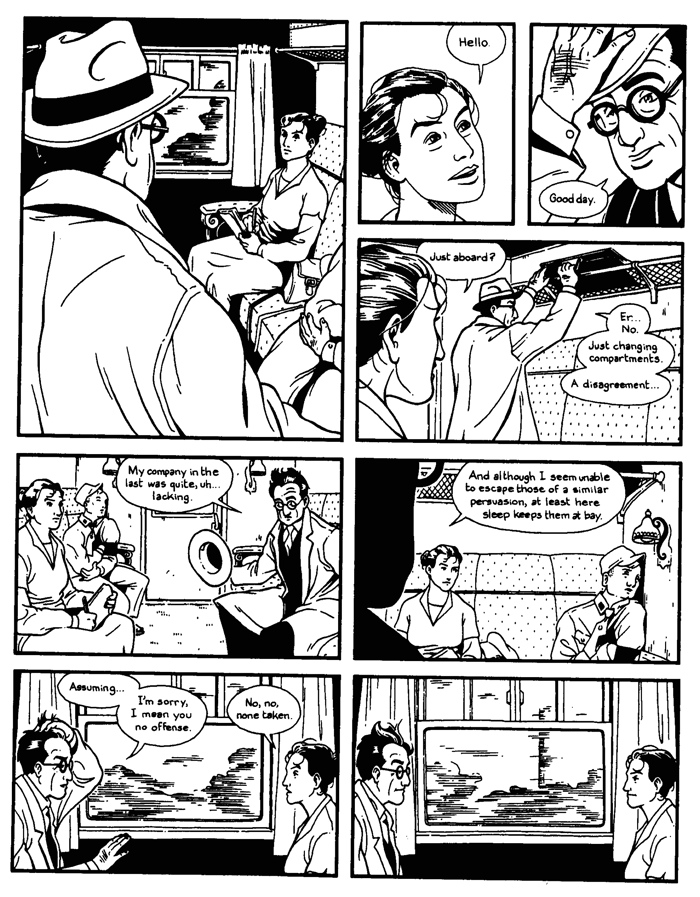
Jason Lutes: "Although the decision to write and draw a 600-page book about Berlin between the wars seemed arbitrary and impulsive at the time (made as it was immediately upon seeing a magazine ad for a book on the subject), the more I researched the period, the more interesting and resonant it became to me. I do not speak or read German, had never been to Germany, and knew close to nothing about the Weimar Republic, so I saw it as an interesting challenge – one that would test my technical and imaginative capacity as a cartoonist. From the beginning the goal was to create a portrait of the city and its people, using all of the tools I had at my disposal."
A key context within all this iniquity was the inflation, which was when inflation really was inflation. After the war, the German economy was shaky but still in fair working order. But by 1923, heavy war reparations and profiteering industrialists saw Germany’s funds flow abroad, creating an inflation that left Berliners to scrounge and barter for survival. Money became meaningless, and the good old German values of hard work and propriety were suddenly made obsolete.
a
a
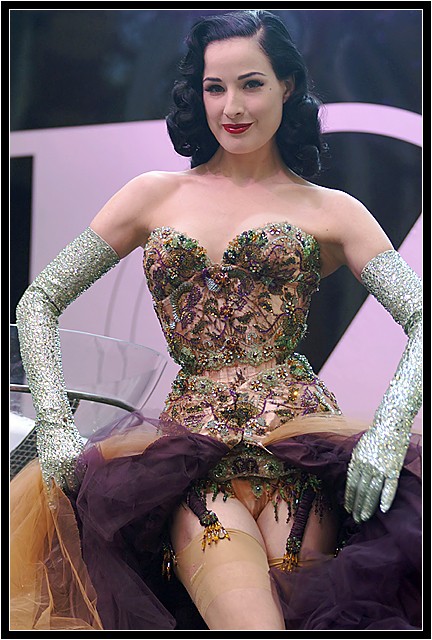
''Speaking of floors, Dita certainly mopped one last night, when in her role as Girl Friday Cointreau, she put on a show here at the House of Blues. And with legs as smooth as anything B.B. King might play, and a bod just as composed, she tingled and teased in a giant martini glass. And though I am far from a Ditain-A-Glass virgin -- I'd caught her act in both Toronto and New York before -- it was no less bombshellastic -- and a bit like, perhaps, hearing Aretha Franklin belt R-E-S-P-E-C- T. Can once or twice ever be enough? Shinan Govani
As it happens, after our little meet in the hotel room, Dita and mine, I walked out to the hallway, and toward the bank of elevators, where I found a huddle of identically T-shirted bible students sitting on the floor, essentially blocking the lift. It was the God Squad; well, at least a quotient of them. They were having a meeting. Besides, you see, the annual Taste of the Cocktail conference going on on this particular week in New Orleans, there was also a not-small Young Christian jamboree (both bartenders and believers had covered the city!), and here, having just had face-time with the universe’s most famous living burlesque star, I found myself in a religious sea.
In post-Katrina New Orleans, where the biblical sort of happened, and where not much is actually new–where rich sidles up to poor, in an almost stunning way, and where the past is always running up to the present — it seemed apt, this meeting of universes. Giant martini glass, meet the Garden of Eden. ( Shinan Govani, National Post )


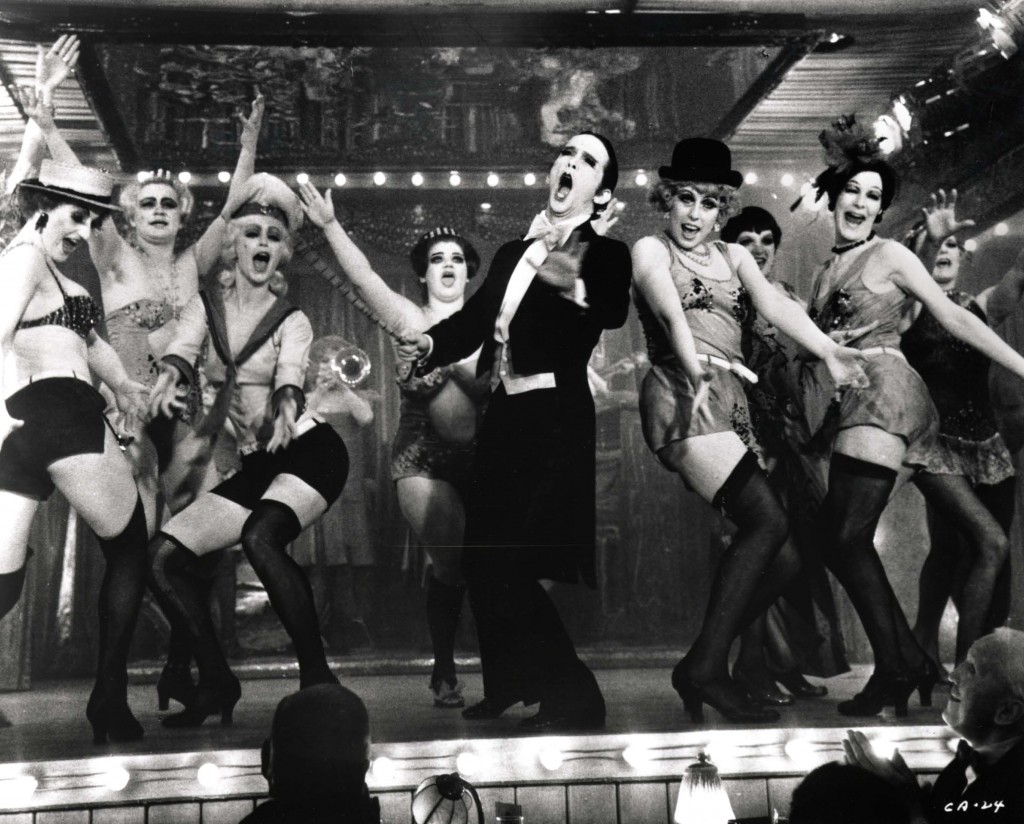
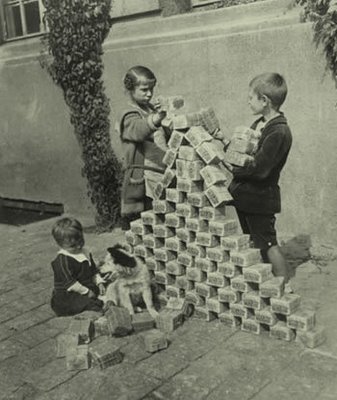



 COMMENTS
COMMENTS